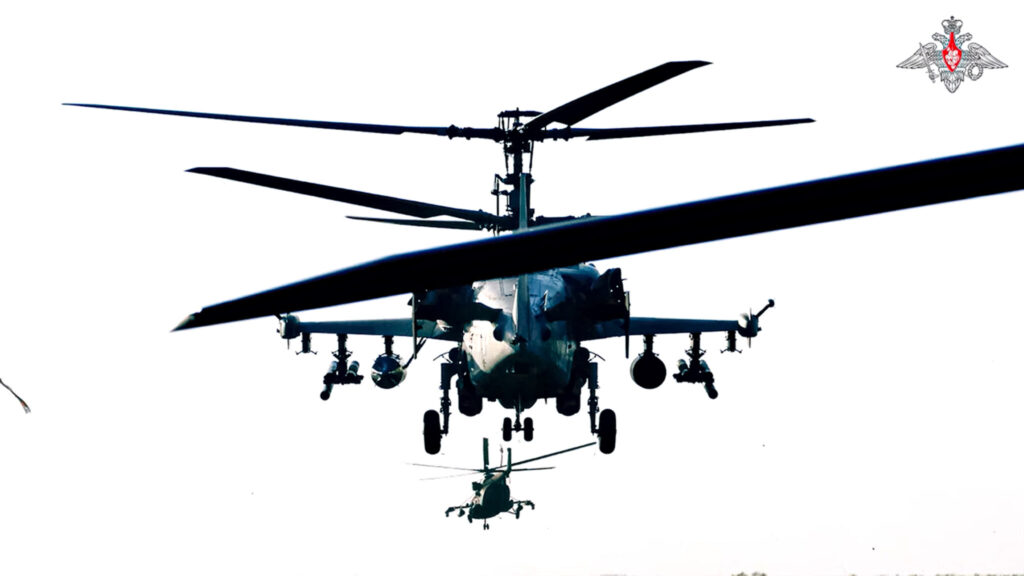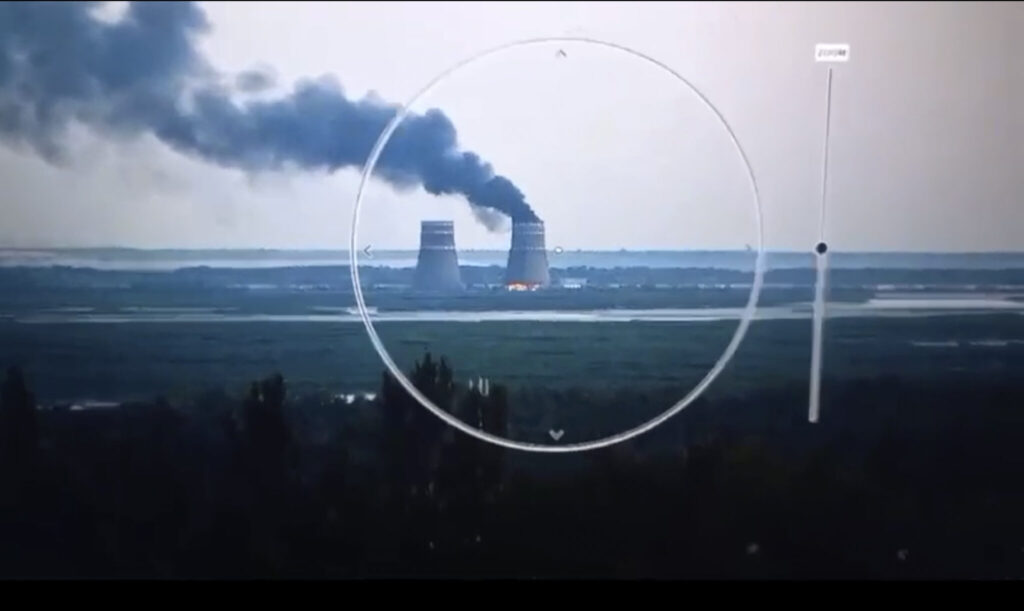Russian President Vladimir Putin said Monday that the Ukrainian army’s incursion into the Kursk region, which has caused more than 100,000 civilians to flee and embarrassed the Kremlin, is an attempt by Kyiv to stop Moscow’s offensive in eastern Ukraine’s Donbas region and gain leverage in possible future peace talks. Russian forces are still scrambling to respond to the surprise Ukrainian attack after almost a week of fierce fighting, but Putin insisted Moscow’s army will prevail.
Quick Read
- Putin’s Statement: Russian President Vladimir Putin stated that Ukraine’s incursion into the Kursk region is an attempt to halt Moscow’s offensive in eastern Ukraine and gain leverage in potential peace talks.
- Ukrainian Incursion: Ukrainian forces launched a surprise attack into Russia’s Kursk region, pushing 12 kilometers into Russian territory and controlling 28 settlements, causing significant embarrassment for the Kremlin.
- Civilian Impact: The attack led to the evacuation of over 100,000 civilians, with 12 reported deaths and 121 injuries, including 10 children.
- Putin’s Response: Putin claimed the Ukrainian attack aims to destabilize Russia domestically, but insisted that Moscow’s military efforts in eastern Ukraine will continue unabated.
- Military Response: Russian forces, caught off guard, are still scrambling to respond, with reports of difficulties in tracking down Ukrainian diversionary units within Russia.
- Kursk Governor’s Report: Kursk’s acting governor confirmed the scale of the Ukrainian incursion and noted that some Ukrainian forces are using fake Russian IDs.
- Largest Attack on Russian Soil: This is the largest attack on Russian territory since World War II and the first major incursion led by the Ukrainian army.
- Criticism and Propaganda: Russian state media downplayed the incursion, while some Russian officials criticized the military’s lack of preparedness for the attack.
- Western Involvement Concerns: The incursion has reignited concerns about whether Ukraine is using NATO-supplied weapons for attacks on Russian soil, with conflicting responses from Western officials.
- Russian Defense Efforts: Russia’s Defense Ministry claimed that reinforcements and airstrikes have repelled Ukrainian attacks, but analysts warn that the toughest phase for Ukraine’s incursion may be yet to come.
The Associated Press has the story:
Putin: Ukraine’s incursion into Kursk is an attempt to stop Moscow’s eastern offensive
Newslooks- KYIV, Ukraine (AP) —
Russian President Vladimir Putin said Monday that the Ukrainian army’s incursion into the Kursk region, which has caused more than 100,000 civilians to flee and embarrassed the Kremlin, is an attempt by Kyiv to stop Moscow’s offensive in eastern Ukraine’s Donbas region and gain leverage in possible future peace talks. Russian forces are still scrambling to respond to the surprise Ukrainian attack after almost a week of fierce fighting, but Putin insisted Moscow’s army will prevail.
Speaking at a meeting with top security and defense officials, Putin said the attack that began Aug. 6 appeared to reflect Kyiv’s attempt to gain a better negotiating position in possible future talks to end the war.
He argued that Ukraine may have hoped to cause public unrest in Russia with the attack, adding that it has failed to achieve that goal, and claimed that the number of volunteers to join the Russian military has increased because of the assault. He said the Russian military is driving on with its eastern Ukraine offensive regardless. “It’s obvious that the enemy will keep trying to destabilize the situation in the border zone to try to destabilize the domestic political situation in our country,” Putin said.
Acting Kursk Gov. Alexei Smirnov reported to Putin that Ukrainian forces had pushed 12 kilometers (7.5 miles) into the Kursk region across a 40-kilometer (25-mile) front and currently control 28 Russian settlements. Smirnov said 12 civilians have been killed and 121 others, including 10 children, have been wounded in the operation. About 121,000 people have been evacuated or left the areas affected by fighting on their own, he said. Tracking down all the Ukrainian diversionary units roaming the region is difficult, Smirnov said, noting that some are using fake Russian IDs. The governor of the Belgorod region adjacent to Kursk also announced the evacuation of people from a district near the Ukrainian border, describing Monday morning as “alarming” but giving no detail.

Ukrainian forces swiftly rolled into the town of Sudzha about 10 kilometers (6 miles) over the border after launching the attack. They reportedly still hold the western part of the town, which is the site of an important natural gas transit station.
The Ukrainian operation is taking place under tight secrecy, and its goals — especially whether Kyiv’s forces aim to hold territory or are staging hit-and-run raids — remain unclear. The stunning maneuver that caught the Kremlin’s forces unawares counters Russia’s unrelenting effort in recent months to punch through Ukrainian defenses at selected points along the front line in eastern Ukraine.
Russia has seen previous incursions into its territory during the nearly 2 1/2-year war, but the foray into the Kursk region marked the largest attack on its soil since World War II, constituting a milestone in the hostilities. It is also the first time the Ukrainian army has spearheaded an incursion rather than pro-Ukraine Russian fighters.
The advance has delivered a blow to Putin’s efforts to pretend that life in Russia has largely remained unaffected by the war. State propaganda has tried to play down the attack, emphasizing the authorities’ efforts to help residents of the region and seeking to distract attention from the military’s failure to prepare for the attack and quickly repel it.
Kursk residents recorded videos lamenting they had to flee the border area, leaving behind their belongings, and pleading with Putin for help. But Russia’s state-controlled media kept a tight lid on any expression of discontent. Retired Gen. Andrei Gurulev, a member of the lower house of the Russian parliament, criticized the military for failing to properly protect the border. “Regrettably, the group of forces protecting the border didn’t have its own intelligence assets,” he said on his messaging app channel. “No one likes to see the truth in reports, everybody just wants to hear that all is good.”
The combat inside Russia rekindled questions about whether Ukraine was using weaponry supplied by NATO members. Some Western countries have balked at allowing Ukraine to use their military aid to hit Russian soil, fearing it would fuel an escalation that might drag Russia and NATO into war.
Though it’s not clear what weapons Ukraine is using across the border, Russian media widely reported that U.S. Bradley and German Marder armored infantry vehicles were there. It was not possible to independently verify that claim. Ukraine has already used U.S. weapons to strike inside Russia. But Italian Foreign Minister Antonio Tajani said in an interview published Monday that the weapons provided by his country “cannot be used to attack Russia on its territory.”
Meanwhile, German Defense Ministry spokesperson Arne Collatz said Monday that legal experts agree that “international law provides for a state that is defending itself also to defend itself on the territory of the attacker. That is clear from our point of view, too.”
Russia’s Defense Ministry said Monday that reinforcements sent to the area backed by air force and artillery had fended off seven attacks by Ukrainian units near Martynovka, Borki and Korenevo during the previous 24 hours. The ministry said Russian forces also blocked an attempt by Ukrainian mobile groups to forge deep into the Russian territory near Kauchuk.
Russian air force and artillery also struck concentrations of Ukrainian troops and equipment near Sudzha, Kurilovka, Pekhovo, Lyubimovo and several other settlements, it said. Warplanes and artillery hit Kyiv’s reserves in Ukraine’s Sumy region across the border, it added.
Pasi Paroinen, an analyst with the Finland-based Black Bird Group open-source intelligence agency, which monitors the war, said the toughest phase of Ukraine’s incursion is likely to begin now as Russian reserves enter the fray. Ukraine’s progress on Russian territory “is challenging the operational and strategic assumptions” of the Kremlin’s forces, according to the Institute for the Study of War.
It could compel Russia to deploy more military assets to the long border between the two countries, the Washington-based think tank said in an assessment late Sunday. It described the Russian forces responding to the incursion as “hastily assembled and disparate.”







